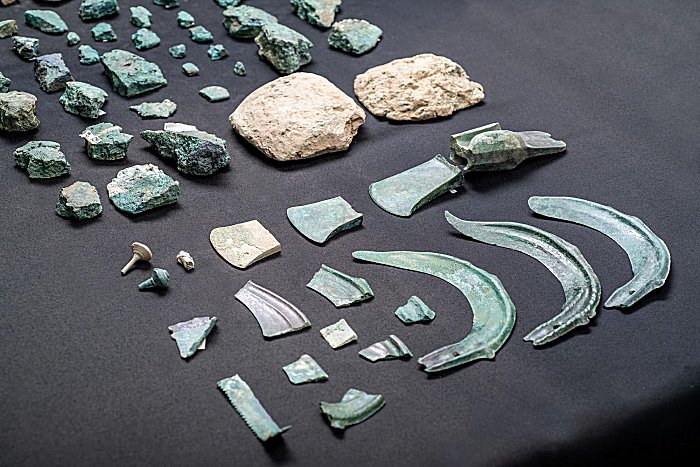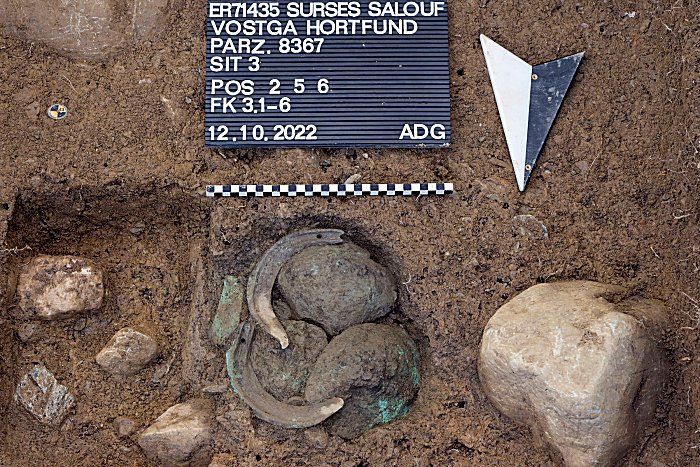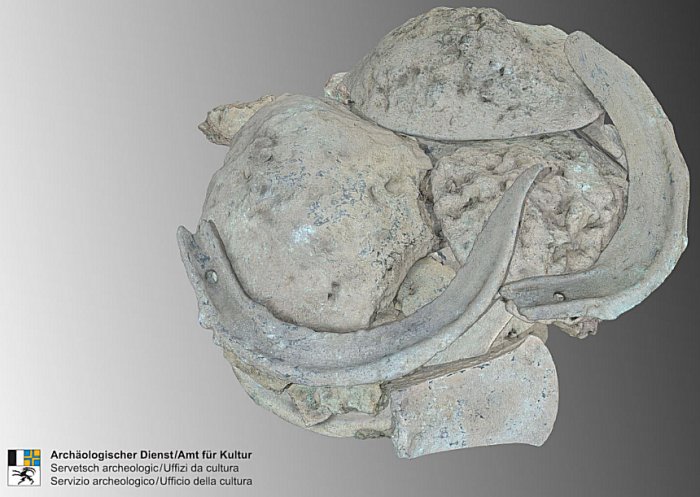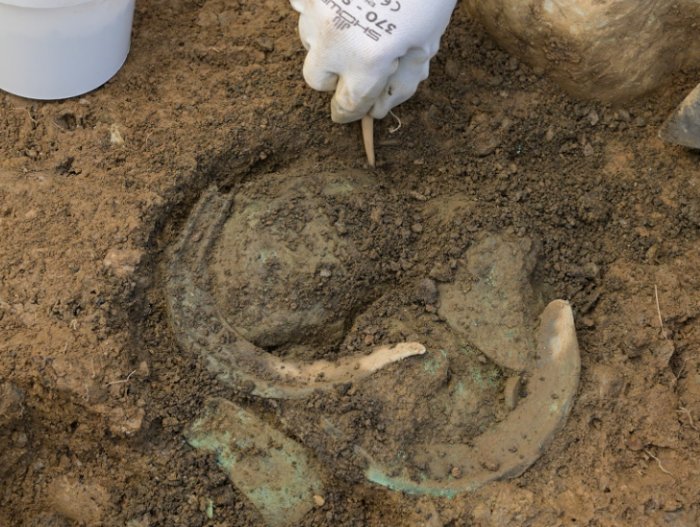Conny Waters – AncientPages.com – A total of 80 bronze artifacts dated to the Late Bronze Age, with a total weight of around 20 kilograms were unearthed by a team of archaeologists excavating the area in the vicinity of the prehistoric settlement of the Motta Vallac.

Items – discovered near Salouf, a former battlefield in southeast Switzerland dating back to the Roman campaign in the Alps in 15 BC – include Bronze Age sickles, axes, needles, pieces of metal and saw fragments. Image credit: Graubünden Archaeological Service
This archaeological discovery was made last autumn in Oberhalbstein (Surses), in Switzerland’s southeastern Canton Graubünden. It consтιтutes a part of the ongoing research project “CVMBAT” (Romansh for fight, battle and skirmish) on the Roman campaign in the Alps.
At the site of the Motta Vallac, where the battle took place in 15 BC, in a narrowly defined pit, researchers digitally recorded and salvaged a collection of 80 objects from the Late Bronze Age.
This so-called landfill is by far the largest and most important ensemble in Graubünden, the complex background of which is now being researched more closely, according to the team’s press release.
The objects are mostly so-called cast cakes or raw metal pieces made of copper. Such items are usually related to inner-Alpine metal production.

Salouf-Vostga, dumping with two sickles, an ax and three cast cakes during the uncovering in October 2022. Image credit: Graubünden Archaeological Service
The deposit also includes Bronze Age sickles, several axes, a fragment of a saw and parts of jewelery and costumes.
During the systematic and large-scale search of the area around the Crap-Ses Gorge with metal probes in autumn 2022, a Bronze Age deposit was discovered on the left side of the valley. Deposits (also: depot or hoard) consist of intentionally deposited, buried or hidden valuables, mostly made of metal.
The site itself is in the “Vostga” field south below the important prehistoric settlement of Motta Vallac near Salouf, in close relation to a central transalpine transport route. After the report of the find had been received, employees of the ADG carried out a proper archaeological excavation, documentation and salvage on site in October 2022.
The previous analyzes indicate that all objects – partially made unusable on purpose – were deposited in a wooden box and wrapped in leather in the ground.

Salouf-Vostga, landfill – digital 3D model of the objects in the find location. Image credit: Graubünden Archaeological Service
Typological and scientific dating places the ensemble in the Late Bronze Age, i.e. in the 12th/11th century BC a.
The selective dumping or “destroying” of metal valuables is a time and cross-cultural practice and in the 3./2. millennium BC a central aspect of the Bronze Age economy.
The sensational discovery of what is by far the most extensive and important repository to date is a great moment for Graubünden archaeology.
“The comprehensive scientific investigation that will now follow of this find, which is unique in our area, will certainly provide far-reaching insights into late Bronze Age cultural, economic and landscape history,” says Graubünden canton archaeologist Thomas Reitmaier with conviction.

Salouf-Vostga, landfill with two sickles, an ax and three cast cakes during the uncovering in October 2022. Image credit: Graubünden Archaeological Service
Salouf-Vostga, landfill with two sickles, an ax and three cast cakes during the uncovering in October 2022.
“It also underscores the potential of large-scale archaeological prospecting and collaboration with volunteer probers,
No illegal searches with metal detectors have been found. In the canton of Graubünden, the use of metal detectors to search for suspected archaeological objects requires a permit from the ADG.
The illegal use of a metal detector is a punishable offense and, moreover, not a trivial offense, since the archaeological context is irretrievably lost without documentation and specialist knowledge. Archaeological finds are also the property of the canton in which they are found.
Written by Conny Waters – AncientPages.com Staff Writer





